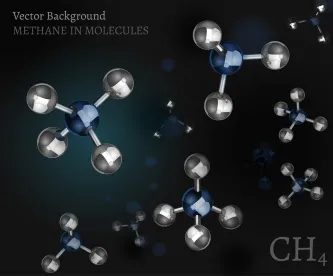On December 17, 2020, the Federal Energy Regulatory Commission (“FERC”) adopted a final rule (“Final Rule”)[1] regarding the potential for certain fuel cell systems to attain qualifying facility (“QF”) status pursuant to Sections 201 and 210 of the Public Utility Regulatory Policies Act of 1978, as amended (“PURPA”)[2]. The Final Rule slightly amends the underlying proposed rule, issued on October 15, 2020 and discussed in greater detail here, in response to comments that the proposed rule would have applied to an overly-narrow subset of fuel cell technologies. In the Final Rule, the Commission approved a broad definition of fuel cell systems that may satisfy QF standards: “all fuel cells that use waste heat in an integrated fuel reforming process” may attain QF status as cogeneration QFs, as long as they satisfy other relevant QF requirements.[3]
PURPA provides for two categories of QFs: small power production facilities that rely on renewable energy input and are subject to size limitations and cogeneration facilities. PURPA directed the Commission to establish the criteria that would determine whether a particular facility qualifies as “cogeneration.” The statute and FERC’s earlier implementation of the statute defined a cogeneration QF as a facility that “produces (i) electric energy, and (ii) steam or forms of useful energy (such as heat) which are used for industrial, commercial, heating or cooling purposes.”[4] The Final Rule establishes that the hydrogen produced by fuel cell systems with an integrated hydrocarbon reformation process that produces electricity and hydrogen will be considered to be “useful thermal energy” for purposes of considering whether a facility produces useful energy used for industrial, commercial, heating or cooling purposes. Cogeneration facilities are subject to operating and efficiency standards and the owners of cogeneration QFs provide FERC with calculations demonstrating that the facility satisfies the standards. Subject to meeting other QF requirements, such as satisfying operating and efficiency standards, facilities using such fuel cell systems to produce hydrogen and electricity used for industrial, commercial, heating or cooling purposes[5] may be eligible for QF status.
The Final Rule will allow the owners of certain fuel cell facilities to access a variety of benefits afforded to facilities with QF status. First, a QF’s energy output may be “put” to the interconnected utility at the utility’s avoided cost (unless the utility has been relieved of its PURPA purchase obligation).[6] Second, the owners of QFs are subject to very light-handed regulation by FERC and are exempt from most FERC regulation even if they sell electricity at wholesale. Third, states lightly regulate the owners of QFs so QF status can relieve its owner of regulation at the state level. As an aside, FERC’s rules implementing PURPA also apply to Electric Reliability Council of Texas (ERCOT), unlike many other FERC requirements.
The Final Rule also makes note of the efficiency gains derived from the use of fuel cells: the ability of fuel cells to convert chemical energy in hydrogen to electricity without combustion can be seen “as a significant improvement in the efficiency of electric generation.”[7] The Final Rule also promotes the use of onsite natural gas reformation equipment to produce hydrogen: that way the waste heat produced when fuel cells produce electricity can be fed back into the natural gas reformation process to create more hydrogen. Such onsite facilities, in the Commission’s estimation, will lead to less burning of natural gas in the production of hydrogen.[8]
[1] Fuel Cell Thermal Energy Output, Order No. 874, 173 FERC ¶ 61,226 (2020) (“Final Rule”).
[2] 16 U.S.C. §§ 796, 824a-3.
[3] Final Rule at P 29.
[4] 16 U.S.C. § 796(18); 18 C.F.R. § 292.202(c).
[5] Specifically, the Final Rule referenced adherence to the requirements of PURPA Section 210: that the thermal energy output of the facility is used in a productive and beneficial manner, and that “the electrical, thermal, chemical and mechanical output of the cogeneration facility is used fundamentally for industrial, commercial, residential or institutional purposes and is not intended fundamentally for sale to an electric utility.” Final Rule at P 36; 18 C.F.R. § 292.205(d)(1) – (d)(2).
[6] With certain limited exceptions, utilities have not been relieved of that obligation for small QFs.
[7] Final Rule at P 8.
[8] Final Rule at P 9.






 />i
/>i
